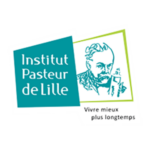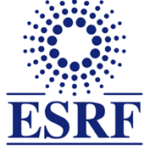Viruses are obligate parasites that rely on the host cells machinery to replicate and spread. Viral proteins establish numerous interactions with host proteins, notably to replicate the viral genome, to produce and assemble new viral particles and to release them. Our aim is to understand these interactions at the molecular level and to decipher their regulations, as each of them represent a potential therapeutic target. To reach this goal we use complimentary approaches including protein biochemistry, structural biology and microbiology.
In the last years, we focused our research on Hepatitis C Virus, Hepatitis E Virus and Coronaviruses.
Contact: xavier.hanoulle@cnrs.fr
Structural and functional relationships between HCV NS5A and NS5B and the human Cyclophilins
To replicate the Hepatitis C Virus (HCV) requires, in addition to its own proteins, the intervention of host cell factors. Among these cell factors the human Cyclophilin A (CypA) protein with its enzymatic peptidyl prolyl cis-trans isomerase (PPIase) activity is mandatory for efficient HCV replication and production of novel infectious particles. We have focused on the deciphering of the structural and functional aspects resulting from the interaction between the human CypA and two HCV proteins: NS5A, a multifunctional protein for which no precise molecular activity has been identified, and NS5B, the viral RNA-dependent RNA polymerase. We have characterized the intrinsically disordered nature of the domain 2 and domain 3 of NS5A (NS5A-D2 and NS5A-D3) using NMR spectroscopy and have shown, for the first time, that they are substrates for the PPIase enzymatic activity of human CypA (Hanoulle et al. 2009; Verdegem et al. 2011). We have identified a short structural motif, the PW-turn, in the disordered NS5A-D2, we have solved its structure and have shown that it is required for HCV RNA replication (Dujardin et al. 2015; Badillo et al. 2017). Moreover, we have shown that the human CypA allows the allosteric regulation of this PW-turn structural motif and thereby fine-tunes HCV RNA replication (Dujardin et al. 2019). We have solved the crystal structure of CypA bound to Alisporivir, a non-immunosuppressive inhibitor that interfere with the CypA:NS5A-D2 interaction and has antiviral properties (Coelmont et al. 2010; Launay et al. 2013; Dujardin et al. 2018). Using selective isotopic labelling of the d1 methyl groups of isoleucine side chains, we have studied the dynamics of NS5B, the HCV RNA polymerase, and have shown that NS5A-D2 acts as an allosteric regulator of this crucial enzyme (Rosnoblet et al. 2012; Bessa et al. 2017).

NMR of the SARS-CoV-2 Main protease (3CLpro) and fragment screening
In the context of the COVID-19 pandemic, we started a project focused on the Main Protease (3CLp) of the SARS-CoV-2. The 3CLp protease is one of the main targets for the development of direct-acting antiviral molecules because this enzyme is essential for viral replication and highly conserved among coronaviruses. To be active as an homodimer, 3CLp depends on complex relationships between its dimerisation, the conformational flexibility of its active site and allosteric regulation. The deciphering of these mechanisms, at the molecular level, represents a crucial step for the design of inhibitors and is the main objective of this project. To this end, various biochemical and biophysical tools are used to study the structure and dynamics of 3CLp proteases from different coronaviruses.

Structural and functional characterization of HEV ORF3, a small multifunctional protein
Hepatitis E Virus (HEV) is the most common cause of acute viral hepatitis worldwide. HEV causes liver infection with broad range of clinical manifestations ranging from asymptomatic cases to acute liver failure patients. The last decades and especially from 2005 to 2015, there is a 10-fold increase of incidents recorded in Europe. There is no specific treatment for HEV infection.
HEV is a small quasi-enveloped virus with a single-stranded RNA genome that contains three open reading frames: ORF1, ORF2 and ORF3. ORF1 and ORF2 proteins correspond to a non-structural polyprotein, including multiple functional domains responsible for the replication of the viral genome, and the capsid protein, respectively. The ORF3 protein is a small (13 kDa) multifunctional protein that is poorly characterized. ORF3 is not mandatory for genomic RNA replication but it is required for the budding of the new virion particles from the infected cells. We aim at gathering structural and functional data on ORF3 in order to further understand, at the molecular level, its role during the HEV life cycle and the mechanism for the release of infectious viral particles. We use biochemical, biophysical and cellular tools to characterize ORF3, to study its membrane association and its interaction(s) with host protein(s).

Fundings:










